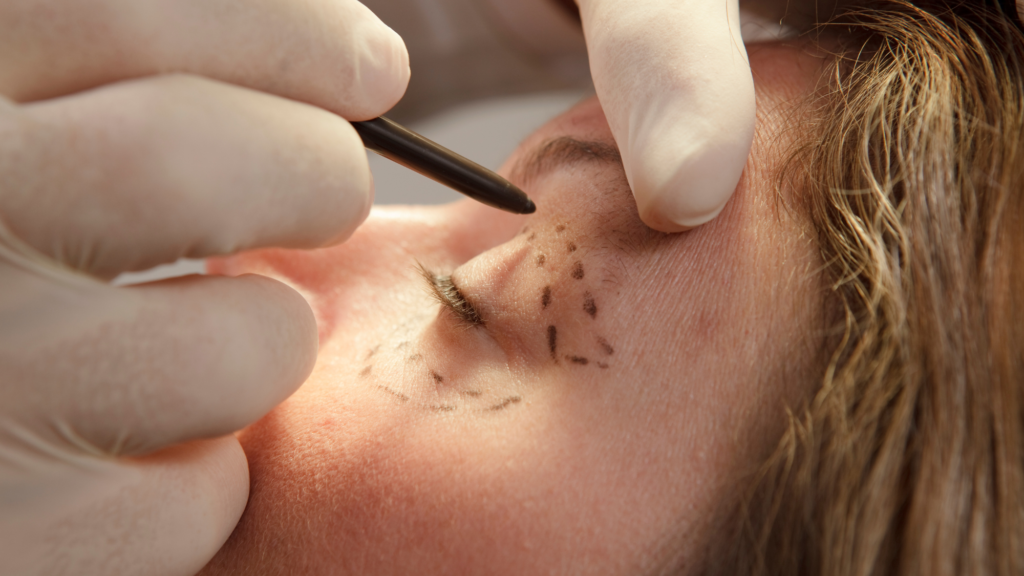My wife and I were walking by the beach the other evening. We got talking about wrinkles and scars, tattoos and beauty, and cosmetic surgery. (That’s what she gets for being married to an academic, I suppose – I’m a philosopher and theologian.)
Why is it, I wonder, that we have come to value so little the complex beauty of time and mortality – the wrinkles and scars of childbirth and parenting – that we’re willing to erase them with botox and fillers? Airbrushing over our shared history and the traces it leaves in our skin?
Perhaps we’d rather erase the stories that time writes on our skin so that we can write our own?
I have been struck by how cosmetic surgery has moved from the margins to the mainstream, even in this post-pandemic world. Masked-up and sanitised, I brave in-person shopping again. I pass cosmetic clinics in shopping strips and malls offering not eye shadow and moisturiser, but injectables and silicone. It’s come to seem so normal. Men and women pop out to have a little ‘work done’ in their lunch break.

You’d be forgiven for expecting a cranky old theologian to mutter about the narcissistic anxieties that fuel this industry. Not today. My interests lie elsewhere.
With the evidence that this industry is not as benign as they’d like us to think. The now well-documented toxicity of many silicone implants. Gravity’s victories over not only the elasticity of our flesh, but the migrating fillers we use to fight against time. This includes the casual disregard some famous – now infamous – practitioners had for the health and safety of their ‘clients’. Their abuses unveiled in the ‘Cosmetic Cowboys’ report should grieve – and worry – us all. They certainly worry the Australian Health Practitioner Regulation Agency (AHPRA) which (at last?) has initiated a public consultation on the industry.
I look at all of this with one eye as a theologian, and the other as a former doctor. As someone concerned for matters of the spirit, but also trained to care for the human body. Someone with these overlapping fields of vision.
That binocular view prompts questions that go beyond cosmetic surgery into questions about what medicine is and what it’s for.
I still remember the medical culture I imbibed as a student. It was paternalistic, to be sure; and I rejoice that we now expect patients to participate in decisions about their care. But that model had something going for it. It saw medicine as a profession. At its heart were the expectations of patient care and a doctor’s commitment to their benefit.
And so, the rise of the cosmetic surgery industry puzzles and concerns me. Shouldn’t the fact that it’s called an industry bother us? Does it not betray a worrying moral drift? Rather than a profession-oriented towards patient care, medicine becomes a commodity for purchase. A doctor’s commitment shifts from their patient’s good, to the meeting of a customer’s desires.
You see, doctors are meant to be like teachers (bear with me). Of course, teachers and doctors want their students or patients to be happy. But that’s not what drives them. A teacher must be responsive to their students, but their job is to know what the students need to learn; their commitment is to their good. So with medicine. A doctor’s job is to know what their patient needs to do (or have done to them), in order for them to flourish. Their commitment is to their patient’s good, a good that doctors discern (yes, along with them), rather than pandering to their desires.
It’s not just medicine that becomes a commodity – so do its ‘customers’.
All of this is eroded when medicine becomes a consumer product. The doctor and their colleagues are transformed into purveyors of a product subject to the wishes of the consumer. The market invades yet another formerly sacred space, filling it with botox and silicon.
More disturbingly, it’s not just medicine that becomes a commodity – so do its ‘customers’. Their very bodies become consumed by the market, commodified by the whims of body and fashion.
How ironic. This industry sells itself as a way for people to satisfy their desires, to write their stories on the tabula rasa of human flesh. But the industry merely peddles illusions of ‘beauty’, subjecting people to the consuming vision of the market. In the end it denigrates the bodies and faces that tell the story of a life well-lived.
Maybe what we need to stave off the rapacious intrusion of the market is a sense of the givenness and the goodness of the body. Of the inevitability of time and change, of vulnerability and mortality. Of the value of stories of love shared and the way that love is mapped on the landscape of our skin. Maybe that will help us see that we are not just consumers, that our bodies are not products.
And yes, my wife and I really did have that conversation on our evening walk. I am struck, once more, with the patience my wife has with a man willing to spoil an evening walk with thoughts of this kind – 36 years’ worth of patience. And struck even more by the beauty of the woman who’s stuck with me for the last 36 years. The beauty of folds and wrinkles – yes, and scars – inscribed by those 36 years on our skin.
Dr Andrew Sloane is a former physician, an Associate Professor of Old Testament and Christian Thought at Morling College, and an Associate of the Centre for Public Christianity.
This article first appeared in The Spectator Australia.


